FS Colour Series: Mosaic inspired by Wilhelmina Barns-Graham’s Transparent Ice
The sharp, minty tinge of MOSAIC Linen was a firm favourite with British artist Wilhelmina Barns-Graham, lending her artworks the biting transparency of freshly cut ice. A pioneer of abstraction during the interwar period, Barnes-Graham returned again and again to craggy, rocky, or glacial landscapes, tracing jagged contours with spidery, meandering lines and mirroring wide open skies with sheer washes of frozen colour.
Scottish by origin, Barns-Graham grew up in a staunch, traditional family in St Andrews. Her creative spark appeared at a young age, as she recalled, “I was eight when I knew I wanted to become an artist. Among my earliest memories are my pencil and crayon drawings, abstract, regular and irregular shapes, usually outlined in blue and filled in with a single colour. These were very private, like secret rooms.” But the artist’s parents were far from encouraging; as an adolescent Barns-Graham was determined to attend art school, but her father, Allan, strongly disapproved, causing a rift between them. Barns-Graham’s supportive aunt came to her rescue, persuading Allan to relent and let her go to Edinburgh College of Art in 1931.
Spells of illness meant Barns-Graham often had to take time off, but she eventually earned her degree in 1937. Throughout this time, she was aware of the burgeoning art scenes in London and Paris, where progressive styles of Modernist, reductive abstraction were being practiced. Principal at Edinburgh College of Art, Hubert Wellington, had spotted Barns-Graham’s talent and also raised her awareness to the St Ives Group in Cornwall, whose interests in expressive abstraction had a profound influence on her, prompting her to move there in 1940.
Barns-Graham spent the next decade in St Ives, befriending various prominent British artists including Ben Nicolson, Barbara Hepworth, Naum Gabo and Margaret Mellis. She also met and fell in love with the poet David Lewis in Cornwall, and married him in 1949. The years that followed were a blossoming period for Barnes Graham as she delved ever closer towards abstraction informed by the natural world, developing her trademark loose brushwork and delicate, trembling lines. After visiting the Grindelwald Glacier in Switzerland, Barns-Graham made a series of paintings, prints and drawings in homage, including Glacier Crystal, Grindelwald, 1950. Rocky shards of ice seem to break apart across the picture plane, catching the light before falling into transparent, pale turquoise shadows, where the deepest, coldest caverns nestle.
In the following decade Barns-Graham separated from her husband, and after inheriting a house from her aunt near St Andrews, began investing equal time on the Cornish coastline and the rugged, unspoilt wilderness of Scotland. Her practice became even more abstract, as hard-edged forms and networked arrangements of linear patterns suggesting movement took precedence, yet references to the enduring landscapes around her always lurked close to the surface. Watery forms, whether frozen or molten, continued to pervade her practice, as seen in the strikingly vivid Glacier Encounter, 1976, where patches of aqua as blue as the Cornish sea are transformed into watery waves, while swirling lines suggest the perpetual motion of the ice-cold, distant ocean. In the darker Linear Development Blue, 1976, sky falls into darkness and watery swell lulls into a night-time reverie, but vivid mint tones rise here and there like patches of light, threatening to break apart the scene.
Rocks and glaciers remained a constant for the rest of her career, appearing as abstracted, geometric planes and facets jutting outwards from, or into one another. Ice Mountain, 1985-87 was made in her later career, revealing the simplified, Modernist language that now occupied her thoughts. A glacial turquoise hue dominates the background, igniting it with the icy freshness of frozen light, while radial lines suggest windswept movement through space. As this work reveals, her later work retained the same vivid colour and vital, restless energy of her early years, as she proclaimed, “Do it now, say it now. Don’t be afraid.”





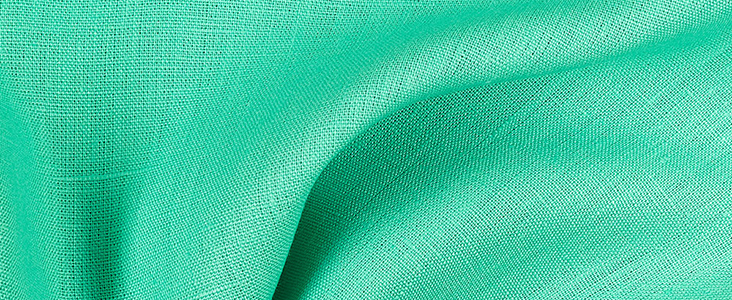
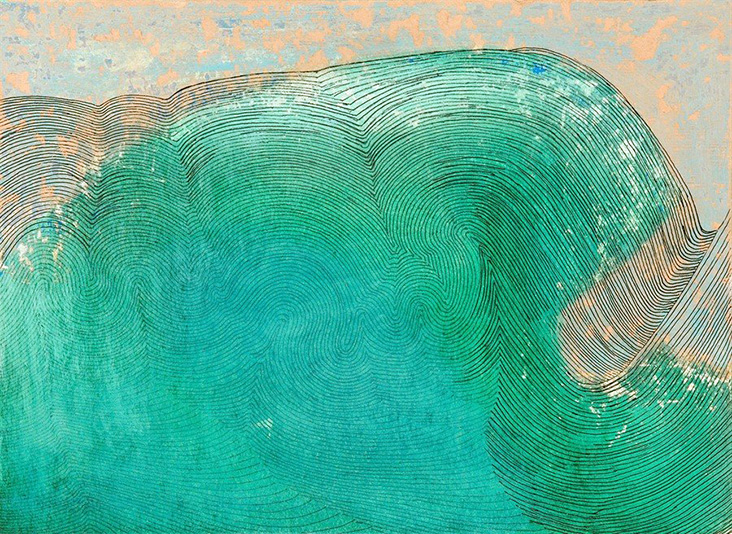
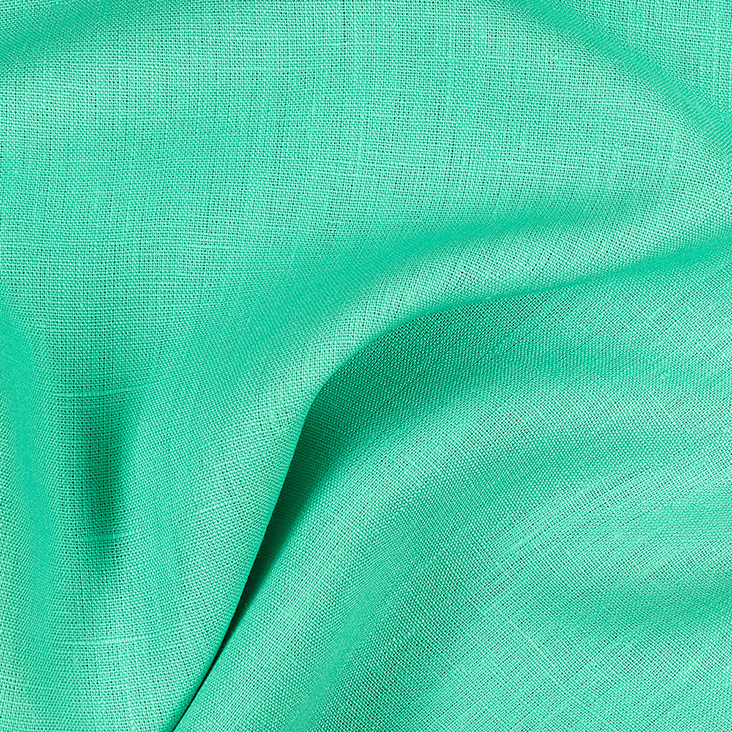
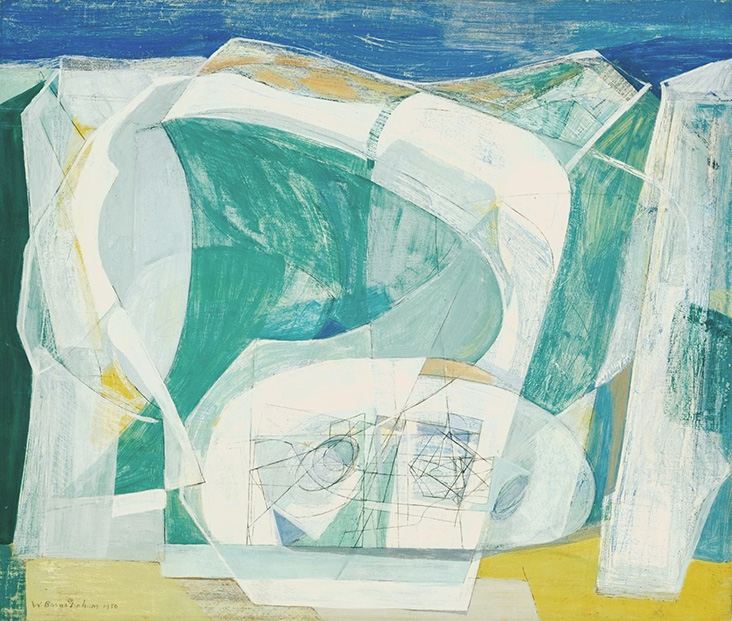
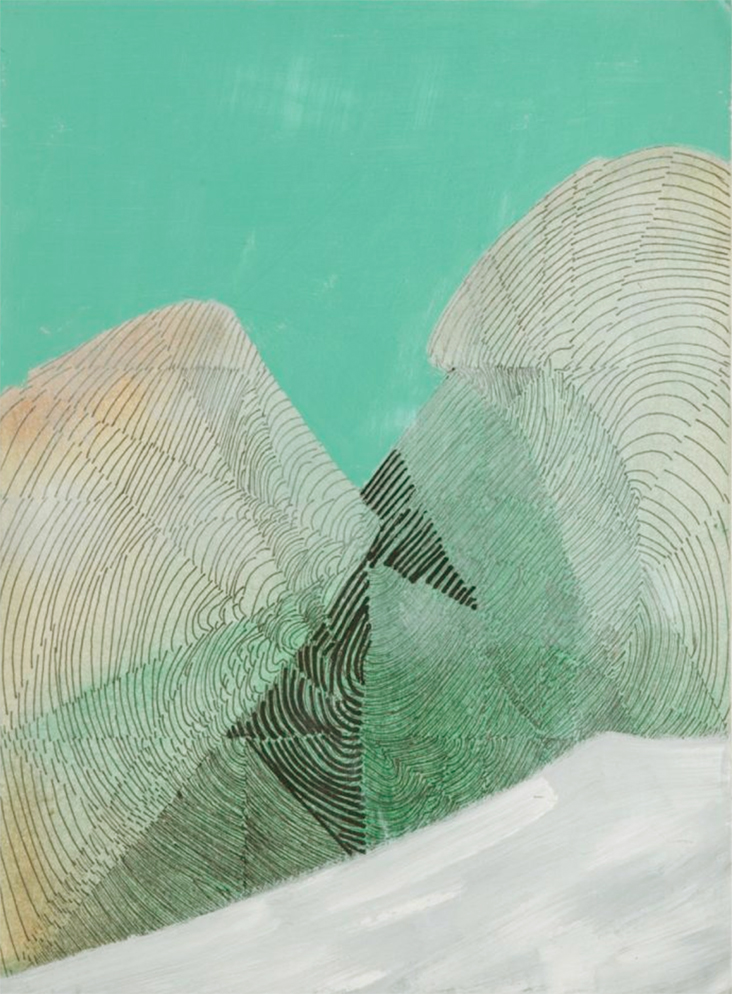














































Leave a comment